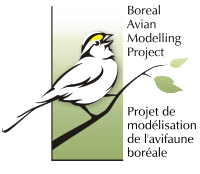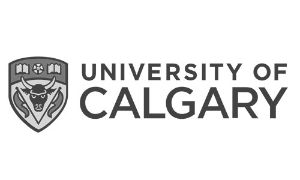Collaborators
Acknowledgement and description of the contributions of ABMI partners to this report.
Thanks to Our Partners and Collaborators
This report has been improved by important contributions from many organizations and individuals. More details about our collaborators are available below.




Introduction
The ABMI benefits from the strong support of various partners and collaborators, from our delivery partners (InnoTech Alberta, the University of Alberta, and the University of Calgary) to our many generous sponsors. A list of these vital contributors is available via the ABMI website, here.
Additionally, many organizations and individuals contribute data and expertise that enhance our program and the data and information products that result. Those who made specific contributions to this report are acknowledged below.
We are grateful to all of our partners and collaborators for their ongoing operational, financial, and scientific support.
Collaborators
Data Partners & Collaborators for the Tolko Report
Boreal Avian Modelling Project (BAM)
For the ABMI’s bird analyses, ABMI data are combined with data from the Boreal Avian Modelling Project (BAM). Within Alberta, the BAM database is a compilation of data from the Breeding Bird Survey (BBS), Breeding Bird Atlases, Environment and Climate Change Canada (ECCC), the Bioacoustic Unit at the University of Alberta, other monitoring projects, and short-term research projects. In particular, the ABMI, BAM, and ECCC have enjoyed a long and mutually beneficial relationship during which both data and ideas have been shared. The data and information reported here substantially benefited from the aggregate dataset of these organizations, as well as the efforts and expertise of the collaborating scientists.

Alberta Environment and Protected Areas (EPA)
ABMI human footprint data are enhanced by a longstanding partnership with the Government of Alberta / Alberta Environment and Protected Areas (EPA) through the Alberta Human Footprint Monitoring Program. This partnership allows, for example, additional geospatial layers produced or maintained by the Government of Alberta to be incorporated into the ABMI's Human Footprint Inventory.

Environment & Climate Change Canada (ECCC)
Environment and Climate Change Canada (ECCC) supports the ABMI's work in a variety of ways. In 2019, acoustic experts from ECCC, the ABMI, the Bioacoustic Unit, and BAM came together to develop the next phase of acoustic data management for Canada, which has come to be called CanAvian (Canadian Network for Open Avian Data). This initiative, funded by ECCC, involves further functional development of the WildTrax platform, and increased standardization and data sharing across data management platforms like WildTrax and NatureCounts.

Bioacoustic Unit (BU)
The Bioacoustic Unit (BU) is a collaboration between the ABMI and the Bayne Lab at the University of Alberta. The BU is the authority on best practices for using acoustic technology in Alberta and offers a range of services to support the application of acoustic technology. Leaders in the application of wildlife acoustic data to environmental management and research needs, the BU team is actively engaged in research to enhance methodologies and better understand the natural acoustic environment.





